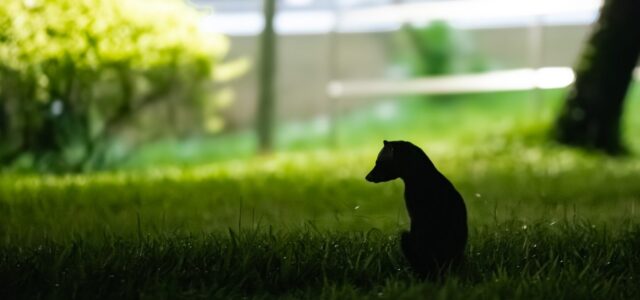‘Palm civet rises from slumber’ for midnight snack — Singaporean captures ‘great shots’ of rare animal sighting at HDB flat
palm-civet-rises-from-slumber-for-midnight-snack-singaporean-captures-great-shots-of-rare-animal-sighting-at-hdb-flat
#Palm #civet #rises #slumber #midnight #snack #Singaporean #captures #great #shots #rare #animal #sighting #HDB #flat,
SINGAPORE: Singapore’s own elusive night wanderer has just made a star appearance — right from our neighbourhood rooftop.
Tan Yong Lin, a wildlife photographer and contributor to the Singapore Wildlife Sightings Facebook group, stunned group members with a photo series capturing a common palm civet (aka musang) sneaking out for a midnight snack, and the best part is that it all happened in the middle of a housing estate — no jungle trek required.

“When night falls, our common palm civets rise from their slumber,” Tan wrote. “Climbing down from their sleeping spots high up on treetops and roofs, they will attempt to find food.”
His caption reads more like a National Geographic voiceover, but this isn’t your usual forest documentary — it’s your very own HDB backyard instead.

The civet, caught in beautifully composed low-light shots, was seen slinking from the rooftops, probably in search of its buffet of choice: Fruits.
Tan then clarified in his post that the photos were shot without a camera flash, relying only on ambient lighting from nearby buildings, which made the clarity even more realistic and impressive.

“These photos were shot without flash and only under ambient light from nearby housing estates,” he explained, and Facebookers were quick to shower the civet and Tan with much-deserved praise:
- “So cute!”
- “Wow… can’t believe 🤩😍🤩 Have native raccoons, Is it?!?”
- “Hope no harm will come near this sweetie! Precious!”
- “Your pictures are so nice, even under poor lighting, I’m impressed. Thank you for sharing.”
Even fellow shutterbugs chimed in with words of encouragement, “Great shots!” and “Nice compositions 👌” — proving that Tan’s post was an instant hit.

📸 Instagrammers can also check out more of Tan Yong Lin’s wildlife photography work at @ylint — but fair warning: You might end up going down a musang rabbit hole.
🦝 But… what’s a palm civet anyway?
The common palm civet (Paradoxurus hermaphroditus) is a native species in Singapore, although you’d be forgiven for thinking it’s some exotic raccoon at first glance. This nocturnal mammal sports a long body, pointed face, and a bushy tail — think of it as a cat-lemur-raccoon mashup. Despite the “common” in its name, actual sightings remain rare for the average Singaporean.

Civets are mostly harmless but prefer to avoid human interaction, although some may take up residence in rooftops or attics. If you see one, appreciate it from afar.

According to the National Parks Board Singapore (NParks), these civets play an important ecological role by dispersing seeds through their droppings after munching on fruit. In other words, they’re the silent gardeners of our urban jungle.

And if you’re wondering, then yes, they’re the same species behind the world’s most expensive coffee — kopi luwak — but please don’t start collecting wild civet poop from your garden. We don’t want you to end up sick in the hospital.
☕ Civet coffee: The bitter truth behind the brew
Kopi luwak is also marketed as the infamous “liquid gold,” as behind that pricey cuppa lies a cruel reality. Civets are often poached from the wild and stuffed into cages just so their poop can be harvested for beans. Not exactly the artisanal experience you thought you were paying for. This so-called delicacy goes by many names — kopi luwak in Indonesia, kape alamid in the Philippines, and weasel coffee in Vietnam.

So the best advice is to skip the brew if you want to save the civets and avoid supporting such inhumane practices, opting for cruelty-free coffee instead.
🦝 What to do if you bump into a civet in SG
- Stay chill: Civets are shy, secretive night owls. They’d rather avoid than start a drama with you. Admire from a distance, and don’t chase or corner them — no one likes an uninvited paparazzi moment, and it may even provoke them to attack you to protect themselves.
- Keep pet food indoors: If you leave cat or dog chow lying around, don’t be surprised if a civet crashes the buffet. They’re opportunistic diners with zero shame.

-
- Hands off their babies: If you spot a couple of tiny civets squeaking in your yard, just leave them be. Just keep an eye on their safety. Their mum is probably nearby and will collect them once the coast is clear. Touching them might scare her off for good.
- New mum in the house: If a civet gives birth on your property, don’t panic. Within two to three months, the little family will pack up and leave once the young ones are old enough to explore.

📞 When to call in reinforcements
Ring NParks’ Animal Response Centre (1800-476-1600) if:
- A civet is stuck in your home and can’t find its way out
- You see one that looks injured
- You need extra guidance on civet matters

For the DIY crowd, there’s even a handy Civet Exclusion Toolkit to help you keep the furry visitors outside where they belong.
If you still have questions, NParks’ online feedback form is open 24/7.
As Singapore sleeps, civets stir. Thanks to local nature enthusiasts like Tan Yong Lin, we got the opportunity to have a rare peek into our city’s secret nightlife, without even the need to go clubbing.

Read more about rare animal sightings over here: ‘Oriental pied hornbill brought his friend to visit me’ — Singaporean shares her ‘delight to have them up close and personal’
